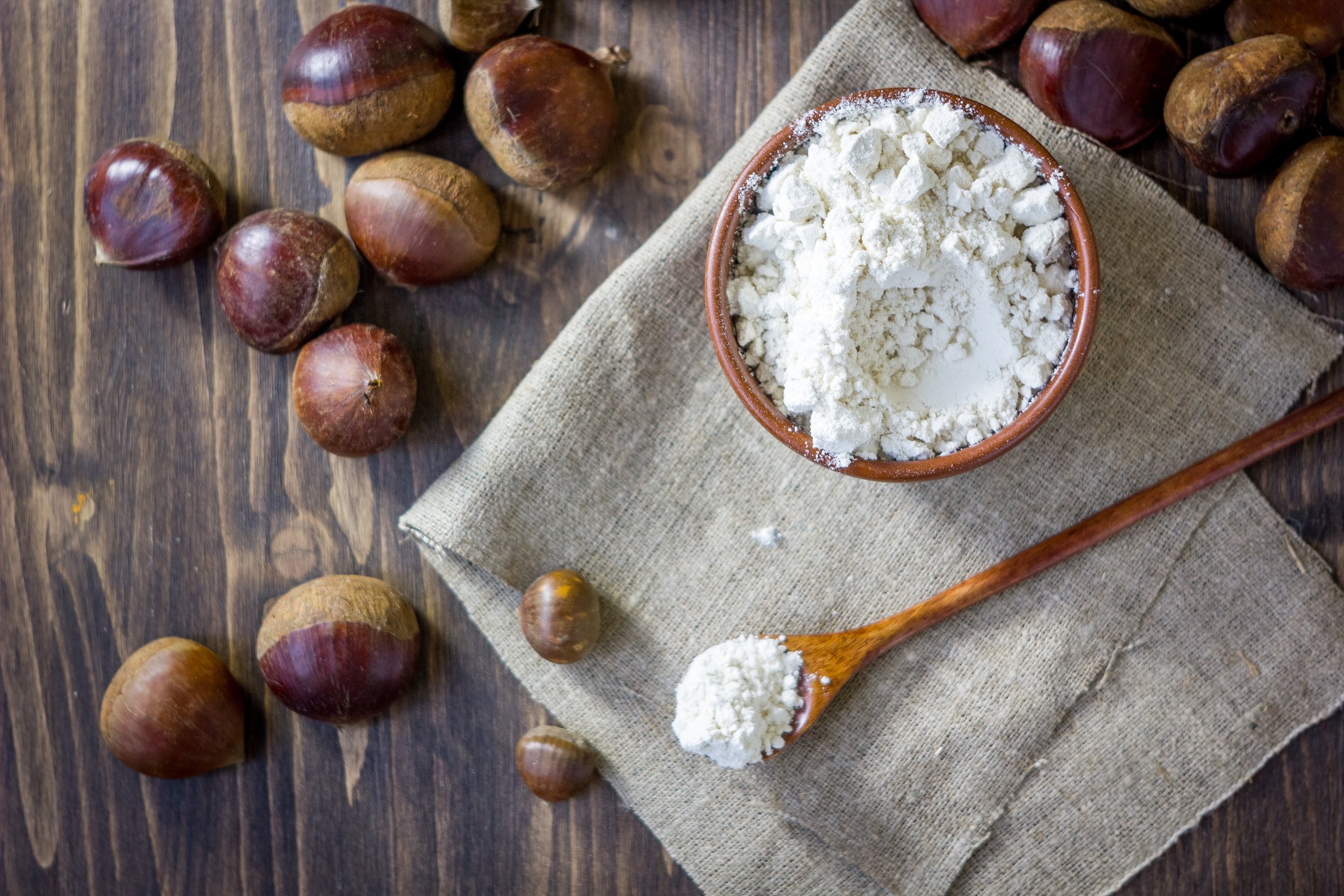Is Chestnut Flour Gluten Free, and is it Better Than Wheat Flour?
Chestnut flour is a naturally gluten-free flour. Made from ground, dried chestnuts, it’s an excellent option for people with celiac disease or gluten intolerance. Chestnuts do not belong to the wheat family, which means they lack gluten proteins, making chestnut flour a great alternative for those looking to avoid gluten. However, it's important to purchase chestnut flour that is certified gluten-free to ensure it hasn’t been cross-contaminated during processing.
How Is Chestnut Flour Made Gluten Free?
The process of making chestnut flour involves drying and grinding chestnuts into a fine powder. Since chestnuts are inherently gluten-free, the main concern lies in preventing cross-contamination during production. Factories that handle both gluten and gluten-free products may accidentally introduce gluten, so it’s crucial to choose brands that process chestnuts in a dedicated gluten-free facility. Look for a certified gluten-free label to ensure safety.
What Are Some Gluten-Free Chestnut Flour Brands?
Several brands offer certified gluten-free chestnut flour, ensuring that the flour remains free from cross-contamination. Some of the popular brands include:
Nuts.com Chestnut Flour: Known for its fine texture and naturally sweet taste, Nuts.com offers certified gluten-free chestnut flour.
TreeHarvest Chestnut Flour: Specializing in gluten-free and organic chestnut flour, TreeHarvest ensures high quality.
Hearthy Foods: Offering chestnut flour made with a single ingredient and described as the “only grain that grows on trees”
Always check the labels and ensure that the product is certified gluten-free.
What Are the Benefits of Chestnut Flour Over Wheat Flour?
Chestnut flour provides several benefits compared to traditional wheat flour. First, chestnut flour is gluten-free, making it suitable for people with gluten sensitivities. In addition, chestnuts have a unique nutrient profile. They are rich in vitamins, including vitamin C, and minerals like potassium, magnesium, and iron. Chestnut flour is also lower in calories and fat than wheat flour, while being a good source of dietary fiber.
The flavor profile is another difference—chestnut flour has a slightly sweet, nutty taste, which can add depth to baked goods and recipes.
Can You Substitute Chestnut Flour for All-Purpose Flour?
Chestnut flour can be used as a substitute for all-purpose flour in many recipes, but it does require some adjustments. Since chestnut flour lacks gluten, it doesn’t bind as well as wheat flour, meaning you may need to add a binding agent, such as xanthan gum or psyllium husk, when baking. Additionally, chestnut flour has a denser texture and a distinctive sweet flavor, so it works best in recipes like pancakes, cakes, and breads where a subtle sweetness is welcome.
When substituting chestnut flour for all-purpose flour, start by replacing 25-50% of the wheat flour with chestnut flour. If the recipe allows, experiment with ratios to get the right texture and flavor.
Is Chestnut Flour Naturally Gluten Free?
Chestnut flour is naturally gluten-free, as chestnuts are a type of nut and do not contain any gluten. This makes it a safe and healthy option for those on a gluten-free diet. The only consideration is ensuring the product was processed in a gluten-free environment to avoid cross-contamination.
How Can You Use Chestnut Flour in Recipes?
Chestnut flour is incredibly versatile and can be used in a variety of dishes, both sweet and savory. Here are some popular ways to use it:
Baking: Chestnut flour can be used in gluten-free baking for cakes, cookies, pancakes, and bread. Its natural sweetness makes it ideal for dessert recipes.
Pasta: In Italy, chestnut flour is often used to make gluten-free pasta, lending a slightly sweet flavor to the dish.
Thickening Agent: Chestnut flour can be used to thicken soups, sauces, or gravies due to its starchy properties.
Pancakes: Chestnut flour makes for delicious, fluffy pancakes with a nutty flavor. Combine it with other gluten-free flours for the best texture.
Crispy Coating: Chestnut flour can coat vegetables, fish, or chicken before frying. It gives a light, crispy texture, making it an excellent gluten-free alternative to breadcrumbs.
Crepes: Chestnut flour can make gluten-free crepes, offering a delicate texture and subtle sweetness. These can be paired with savory fillings like cheese and spinach or sweet ones like Nutella and berries.
Pie Crust: Use chestnut flour in gluten-free pie crusts for a unique, slightly sweet flavor. It’s especially good in desserts like apple pies or tarts where its natural sweetness complements the filling.
Pizza Dough: Combine chestnut flour with other gluten-free flours to create a pizza dough that has a distinct nutty flavor. It can be a great base for gluten-free pizzas topped with fresh vegetables and cheese.
Chestnut Flour Polenta: Chestnut flour can also be used in place of cornmeal to make a unique polenta that pairs well with hearty stews or grilled vegetables.
With these diverse applications, chestnut flour is a versatile ingredient that can enhance both sweet and savory dishes.
What Are the Differences Between Chestnut Flour and Wheat Flour in Baking?
When comparing chestnut flour to wheat flour in baking, the key differences come down to gluten content, flavor, and texture. Wheat flour contains gluten, which provides structure and elasticity to baked goods. Chestnut flour lacks gluten, so it results in a denser texture. To compensate, recipes often call for a binding agent like eggs, xanthan gum, or flaxseed.
Flavor-wise, chestnut flour has a mild sweetness that can enhance certain recipes, while wheat flour has a neutral flavor. In terms of nutrition, chestnut flour is lower in calories and carbohydrates than wheat flour and contains more fiber.
Is Chestnut Flour Healthier Than Wheat Flour?
Chestnut flour offers several health benefits that can make it a healthier option for some individuals. It is higher in fiber than wheat flour, aiding digestion and promoting a healthy gut. It also contains more vitamins and minerals, including vitamin C and potassium. For those managing calorie intake, chestnut flour is a lighter option, as it’s lower in calories and fat than wheat flour. However, wheat flour provides more protein, so the best choice depends on your nutritional needs.
How Does Chestnut Flour Compare to Other Gluten-Free Flours?
Chestnut flour is unique among gluten-free flours due to its sweet, nutty flavor. Compared to almond or coconut flour, chestnut flour is milder and less fatty. It can be a great alternative for recipes where you want to maintain a lighter texture. Unlike rice or tapioca flours, chestnut flour adds nutritional value, including dietary fiber and essential vitamins.

